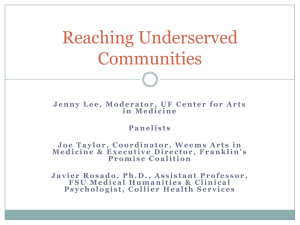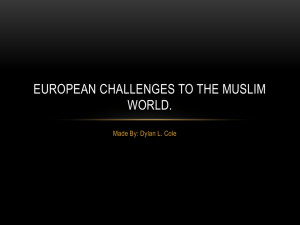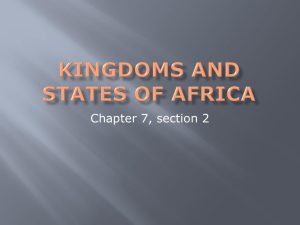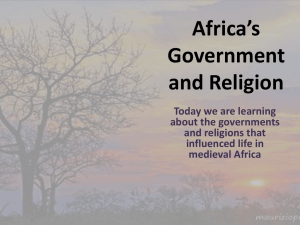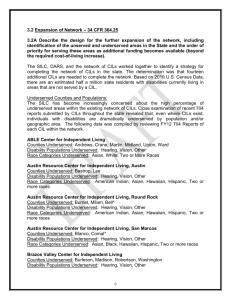Who Are Underserved?
advertisement
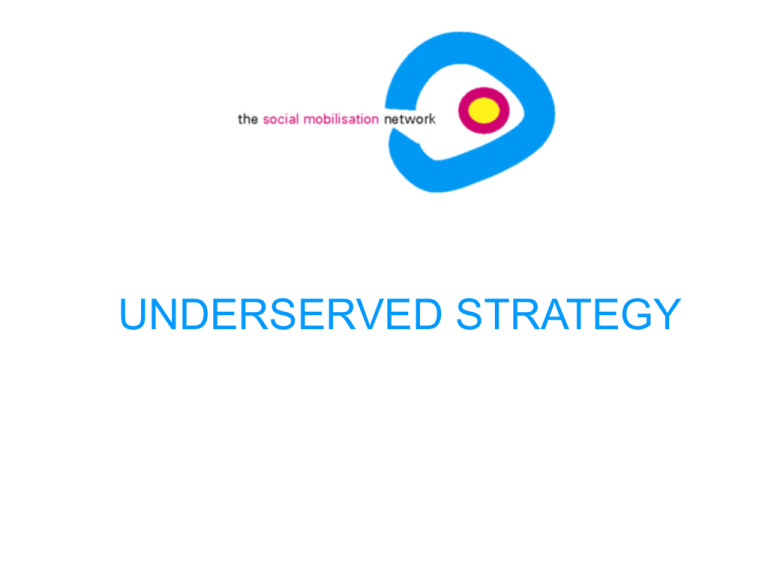
UNDERSERVED STRATEGY
Who Are Underserved?
(From the perspective of polio eradication campaign)
Polio is a disease of poor
Poor – with specific characteristics
(specific social, economic, historical, psychological experiences)
Ghettoized conditions
(which are more conducive for the virus than the conditions of other poor.)
Level of vaccine acceptance
(among underserved and other poor.)
Social Stratification among Muslims
TOTAL POPULATION OF INDIA :1,028,610,328
Muslims in India
Total population of Muslims in India: 138,188,240
Total population of U.P. : 166,197,921; Muslim Population is 18.5% of the total population of U.P.
Muslim Sects in India
Sunni
Shia
Bohra
Qadiani / Others
Population-wise, these sects are extremely minuscule in comparison to the Sunni and the Shia sects all
over the country and much less in U.P. Their social indicators are much better. For insignificant presence
of population and much better social and economic indicators, immunizations level is high (if it is possible
to segregate sect-wise SIA/EPI data, we’ll surely find either ZERO or insignificant WPV cases among the
children of the sects like this.). This is the main reason why USS does not recommend intensified efforts
for immunizations for this sect.
Muslim Sects in UP
Sunni
Deobandi
Bareilvi
Population-wise, the Sunni sect is the biggest sect in India and also in U.P. Most of the Muslim underserved
communities belong to this sect.
Some of the Main underserved communities: Qureshis, Ansaris, Ghazis, Alvis, Saifis, Salmanis, Migrant poor,
Neo Converts, Informal sector labour, etc.
Underserved Strategy
of Communication for Polio Eradication
CRUX - “Despite underserved conditions, ensuring the acceptance of
OPV by underserved communities for every child, every time.”
How to ensure it?
By partnership and confidence building in the underserved communities
for the polio eradication campaign.
Beginning of partnering with Muslim institutions:
In the second half of 2003, formal partnership with AMU, JMI &
Hamdard in coordination with SMNet and other polio partners. followed
by a rapid growth in partnership:
Formal Partners
SMC
/DUC
CDO
BSA
Abbreviations:
DM: District Magistrate
CDO: Chief Development Officer
CMO: Chief Medical Officer
DIO: District Immunization Officer
DYC: District Youth Coordinator
NYKS: Nehru Yuva Kendra Sanghatan
ZYKA: Zila Yuvak Kalyan Adhikari
DPO: District Project Officer
NSS: National Service Scheme
NCC: National Cadet Corps
ZPA: Zila Panchayat Adhikari
DSO: District Supply Officer
DIOS: District Inspector of Schools
BSA: Basic Shiksha Adhikari
SMC: Social Mobilization Coordinator
ADM: Additional District Magistrate
SDM: Sub-Divisional Magistrate
BDO: Block Development Officer
ADO: Assistant Development Officer
MS: Medical Superintendant
MOIC: Medical Officer Incharge
NSV: National Social Volunteer
BO: Block Officer
CDPO: Child Development Project Officer
PC/PO: Project Coordinator / Project Officer
ABSA: Additional Basic Shiksha Adhikari
BMC: Block Mobilization Coordinator
GPVA: Gram Panchayat Vikas Adhikari
SHG: Self Help Groups
ANM: Auxilllary Nurse Midwife
NYM: Nehru Yuva Mandal
YMD: Yuvak Mangal Dal
AWW: Anganwadi Worker
CMC: Community Mobilizer
BDC: Block Development Committee
DM
ADM /
SDM
BMC
ABSA
DIOS
CMC
Principal
Teacher
Tehsildar /
Lekhpal GPVA /
SHG
Inter college /
Teachers/ Students
DSO
ZPA
BDO /
ADO
Sup.
Ins
Block
Pramukh
Pradhan
BDC
NSS/
NCC
Volunteer
NSV
NGOs
DYC/
NYKS
NGOs
YMD
Scout /
Guide
AWW
Volunteer
Dal
Nayak
Scout
Guide
NYM
Vol. /
Cadets
PC / PO
MS /
MOIC
ANM
Missed
Child
Kotedar
CMO/
DIO
BO
Sabhasad
ZYKA
CDPO
Super
visor
Rotary
Mayor/
Chairman
Nagar Nigam
/Palika
DPO
Bottom-Up Approach
Intensification of grassroots mobilization
District leadership of Underserved
Communities
Sub-District leadership of
Underserved Communities
Grassroots
Occupational Communities, Religious Leaders
/ Institutions, Educational Institutions, Women,
& Others local leaders
Underserved Partners
Institutions at District and Block level
SOCIO-RELIGIOUS
COMMITTEES /
ASSOCIATIONS
Jametul Quresh
Saifi Conference,
Ansari Conference,
Mewati Samaj,
Alvi Conference, Jamate
Ulema e Hind,
Dargah committees
All India Milli Council
Al Barkat networks
Abbasi Samaj
Salmani Samaj
MUSLIM UNIVERSITY
NETWORKS
Jamia Milia Islamia
Aligarh Muslim University
Hamdard University
Shibli College
Falah é Aam
KEY RELIGIOUS
INSTITUTIONS
NETWORKS
OCCUPATIONAL NETWORKS
Rickshaw Pullers Association
Brick factory worker
Rural workers organization
Brass Workers
Lock Workers
Glass factory workers
Beedi (local cigarette) workers
Embroidery workers
Darul-Ul-Uloom, Deoband
Nadvatul – Ulema, Lucknow
Jamaitul Falah
Community level – Caste, Occupational & Religious leaders
RELIGIOUS INSTITUTIONS
MASJID: Mosque {Includes Jama (Main Mosque / Eidgah (Mosque for Eid)}
MADRASAS: Muslim education centers
DARGAH/MAZAAR: Sufi Shrines
RELIGIOUS INFLUENCERS
Pesh Imam: Leads male collective prayer at local mosque
Muazzan: Calls for prayer at a mosque
Mutawalli / Mohtamim: Local management body for mosque
Qari: Recites Kuranic versus
Qazi: Performs marriages
Mufti: Issues Religious decrees (Fatua)
Sajjada-Nashin/ Gaddi Nashin / Khadim: Spiritual authorities at Dargarhs
LOCAL CASTE / OCCUPATIONAL LEADERS:
Querishi / Saifi / Mansuri: Chaudhary (usually)
Ansari: Sardar
Idrisi: Masterji
Impact
• The USS leveraged the influence of three Muslim universities to
neutralize institutionalised opposition to the polio campaign
• It was able to identify social stratifications of the resistant
communities – their events / rituals / practices (Sufi shrines / melas
etc) and strategically engaged local leadership in a planned &
systematic manner to reach out to the most vulnerable children in
high risk areas with Oral Polio Vaccine (OPV), in some cases for the
first time.
• This led to a narrowing of the immunity gap among the children of
these communities (from 29% in early 2004 to < 4% at present) and
resulted in a fewer number of reported polio cases in Muslim
children.
Way Forward
• Capacity Building of district and block level functionaries
of the SM Net and other communication partners
• Integration with other programs like girl child education /
RI / sanitation / nutrition etc.
• Sensitization of implementing agencies.
